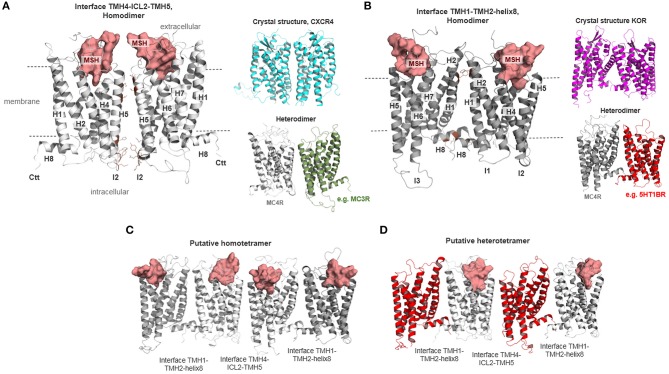Figure 7.
Different putative MC4R homodimer and heteromer arrangements. The MC4R has the capacity to constitute homodimers or homo-oligomers (42–44). In (A,B), two different homodimeric MC4R constellations are supposed with different interfaces. (A) MC4R homodimer with an interface between parts of TMH4 (or H4), intracellular loop 2 (ICL2 or I2), and the TMH5 (or H5) based on the determined dimeric crystal structure of CXCR4 (cyan). Such arrangements should also be assumed for a heterodimeric constellation as reported for MC4R and MC3R (40) (gray, MC4R; green, MC3R). In (B), the MC4R protomers are in contact via the interface between TMH1-TMH2-H8 based on a determined KOR structure (magenta backbone). Heteromeric MC4R constellations, such as with the GPR7 (47), may also be arranged in such a constellation. Moreover, in (C) a tetrameric MC4R arrangement is shown, with the supposed interfaces alternating between dimers. (D) An alternating dimer arrangement for higher complexes is also feasible for tetrameric heteromers.

